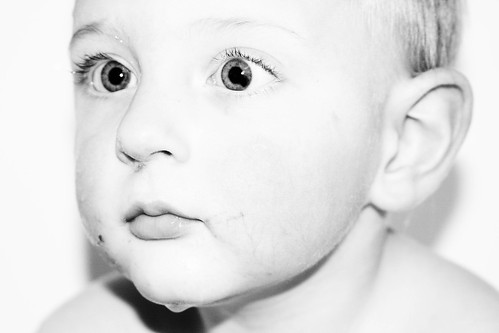
Retinopathy of prematurity. It is a dreaded word. It is one of the leading causes of blindness in babies despite more than 60 years of research. Sixty years. It is also a disease that effects every child differently and no one can really predict who will have the worst of the worst. Even a baby born at the exact same gestation can have very different results.
So what is ROP?
It is a disease that affects prematurely born babies. It is NOT found in full term infants. It is thought to be caused by disorganized growth of retinal blood vessels which may result in scarring and retinal detachment. ROP can be mild and may resolve spontaneously, but may lead to blindness in serious cases. The growth of the abnormal vessels causes the retina to contract and the abnormal vessels causes retina detachment which then leads to blindness.
Who is at risk?
- Gestational age and low birth weight : The lower the infants birth weight and gestational age the more likely they are to develop ROP AND have to have it treated.
- Supplemental oxygen: Though the NICU has increased in its oxygen treatment the need for supplemental oxygen in the little tiny babies is just a fact of life. The use of new technology and younger gestation babies being born still requires oxygen assistance and therefore still at risk for ROP.
- Vitamin E deficiency: though this is still being looked at in medical trials some infants have been treated with higher levels of vitamin E and the levels of ROP has been lower.
- Race: Those darn little white males strike again. They are at higher risk for developing severe ROP that results in retinal detachment than any other race.
- Indomethacin: The meds used to help close many pre term infants PDA have also been linked to increasing their chance of SEVERE ROP.
- Light levels: In the last few years many NICU's have "turned off the lights" so to speak. Keeping the lights low and sound levels down have seemed to decrease the ROP levels.
So what are the stages of ROP?
stage 1: blood vessels not completely developed
stage 2: enhanced grow of blood vessels (more than normal)
stage 3: scar tissue, blood vessels affecting the vitreous eventually + sign: additional observations (bleeding, well filled blood vessels, rigid pupil...)
stage 4a: partial retinal detachment (vision loss) by traction of scar tissue in the vitreous
stage 4b: partial retinal detachment involving area of best vision (severe vision loss)
stage 5: complete retinal detachment (no vision)
The below pictures shows what zone is effected.Tyler was diagnosed with zone 1 stage 3 rush disease or plus disease. Meaning they saw the change from a lower stage of ROP within just a few hours. From his first exam to zone one was about 72 hours. We had him in surgery quickly!
ROP has damaged Tyler's vision to the point of him being on the verge of legally blind. He is such a great kid that he compensates for so much of his vision loss. We have been lucky that we have had such awesome therapist for him. Aften and Martha were great with Tyler. His functional vision is still undetermined.
One of the things that his damage caused was nystagmus and we have the "cool" eye of a coloboma ( due to surgery/dr error) but it is his special eye that hold super powers.
More on those 2 conditions later. Tomorrow I have some suggestions from our friends Aften to engage our visually impaired child!

No comments:
Post a Comment